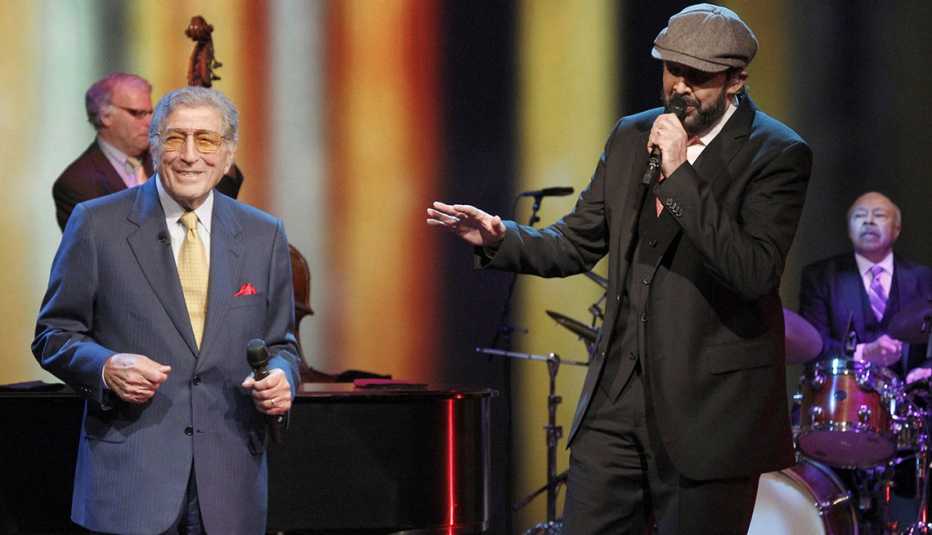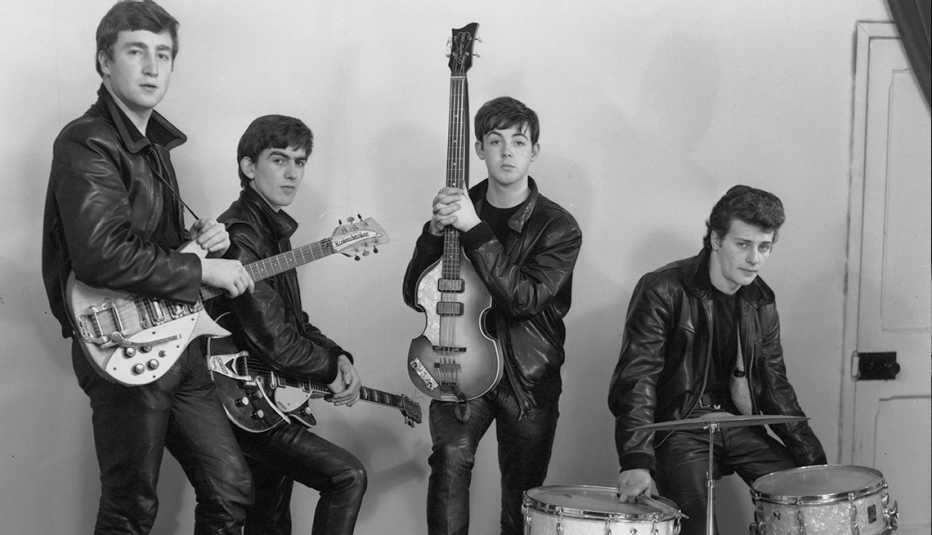AARP Hearing Center


Long before contemporary artists like Bad Bunny and Peso Pluma turned Latin music into an unstoppable global phenomenon, many legendary musicians were drawn to the idea of recording in Spanish. Some of them adapted gracefully to the language. Others stumbled a bit, but their sincerity won them fans in Latin America. From iconic American singers such as Frank Sinatra and Tony Bennett to rock ’n’ roll titans like The Beatles and Queen, you might be surprised by this list of artists who were seduced by Latin rhythms and added them to their musical repertoire.


Nat King Cole
The Alabama-born singer and pianist was one of the first jazz geniuses to make a serious foray into the Latin American songbook. In 1958 he released Cole Español, which featured the sophisticated arrangements of Nelson Riddle. Cole sang with a heavy accent in Spanish and Portuguese, but, oddly, this added a tender quality to intimate versions of classics such as “El bodeguero” and “Noche de ronda.” Encouraged by the success of this album, Cole recorded A mis amigos (1959) — in Rio de Janeiro — and More Cole Español (1962). His cover of “Aquellos ojos verdes” (“Green Eyes”) is timeless.
The Beatles
Perhaps the best ambassadors of British culture in the history of rock, The Beatles crossed paths with Latin music only once in their illustrious career. Before the quartet signed a record deal, Paul McCartney fell in love with The Coasters’ cover of the Mexican bolero “Bésame Mucho,” and added it to The Beatles’ repertoire in 1961. Their version was in English, but McCartney emulated the passion of Latin vocalists when he performed the song live.


Tony Bennett
In 2012, the prolific Tony Bennett turned his attention to Latin culture with Viva Duets, an enchanting album of English-language classics sung alongside stars from the Spanish-speaking world. A unique feature in this record is that Bennett sings in English, while his guest stars accompany him in Portuguese or Spanish. Noteworthy appearances include Nuyorican salsa singer Marc Anthony, Dominican singer-songwriter Juan Luis Guerra, and Cuban-born singer Gloria Estefan. The surprise of the album: a stirring rendition of “Cold, Cold Heart” alongside Vicentico, leader of the Argentine rock group Los Fabulosos Cadillacs.


Queen
Known for their epic progressive rock song “Bohemian Rhapsody,” the British group Queen had many fans in Argentina and Brazil. When they finally toured those countries in 1981, guitarist Brian May was fascinated by the passion of their South American fans, and he dedicated a song to them that included a few phrases in Spanish. “Las palabras de amor (The Words of Love),” a rock ballad featuring May’s signature style on guitar and an exquisite vocal performance by Freddie Mercury, is a highlight of the 1982 album Hot Space.






































































More From AARP
Celebrate Tito Puente’s Centennial With 15 Essential Albums
Listen to the tunes that made America say, ‘Oye cómo va!’
How a Golden Bookmark Sparked an Odyssey to Honor Shakira’s Artistry
Bilingual Grammy Museum exhibit is devoted to the life and work of the Colombian artist
The Original Menudo: Where Are They Now?
Here’s what classic Menudo’s Ricky, Johnny, René, Miguel, Charlie and more of your favorites are up to